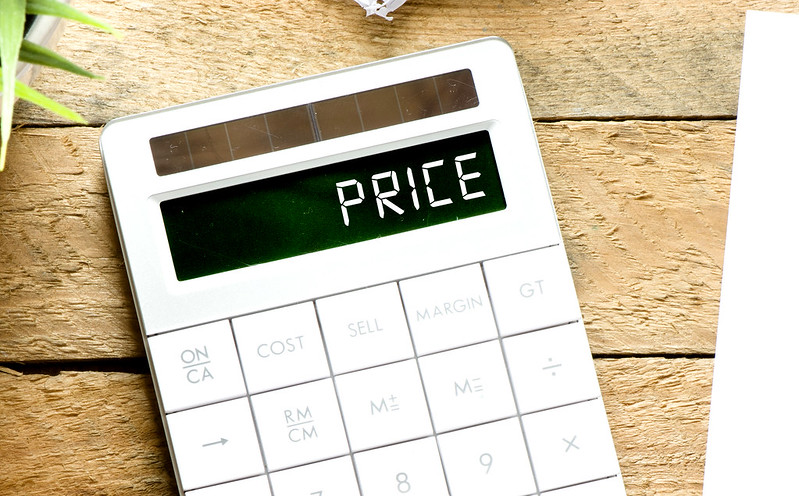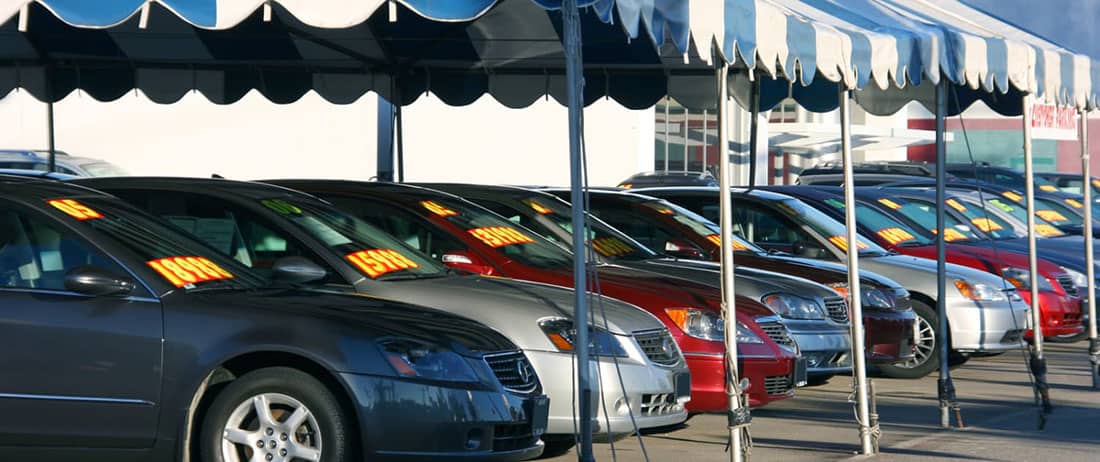Understanding the Used Car Market

The used car market is a complex ecosystem, influenced by a multitude of factors. Pricing isn’t simply about the car’s age or mileage; understanding the interplay of supply, demand, economic conditions, and market segments is crucial for accurate valuation. This section delves into the key drivers of used car prices, providing a comprehensive overview for informed decision-making.
Used car prices are dynamic and fluctuate based on several intertwined factors. The market is not static; it reacts to changes in supply and demand, economic conditions, and consumer preferences. Understanding these elements allows for a more nuanced approach to evaluating a used car’s worth.
Factors Influencing Used Car Prices
Several factors significantly influence the price of a used car. These factors interact and often combine to create a specific market value for each vehicle.
- Supply and Demand Dynamics:
- The interplay between the number of used cars available for sale (supply) and the number of buyers looking to purchase (demand) is a primary determinant of pricing. High demand and low supply often lead to higher prices, while low demand and abundant supply typically result in lower prices. This dynamic is particularly apparent in specific make and model categories or during particular economic cycles.
- Market Segments:
- Different market segments, such as luxury vehicles, economy cars, and specific makes/models, influence pricing. Luxury cars, for example, often command higher prices compared to their economy counterparts due to factors like brand prestige, features, and perceived exclusivity. Certain makes and models, based on their reputation for reliability and performance, may also experience fluctuations in price that exceed those of their comparable vehicles.
- Economic Conditions:
- Economic conditions, including inflation and recessions, significantly impact used car prices. During inflationary periods, the cost of new cars and other goods increases, often pushing up demand for used vehicles. Recessions, conversely, may decrease consumer spending, which can depress used car values. Examples of this include the impact of the 2008 financial crisis, which significantly lowered used car values, and the more recent inflationary period where prices have risen substantially.
- Seasonal Variations:
- Seasonal variations can also affect used car prices. For instance, the demand for certain vehicles might be higher during specific times of the year, such as during holiday seasons, influencing price fluctuations. Additionally, certain models may be more popular during certain times of the year, affecting their demand and price.
Impact of Specific Market Segments
The used car market isn’t homogenous; various segments exist, each with its unique pricing characteristics.
- Luxury Vehicles:
- Luxury vehicles, often from established brands, typically command higher prices compared to their economy counterparts, reflecting factors such as brand reputation, higher-quality materials, and sophisticated features. The demand for luxury models often remains robust, even during economic downturns, contributing to their relatively stable or even increasing value.
- Economy Cars:
- Economy cars, often from less established brands, tend to have lower prices due to factors like lower production costs, simpler features, and a greater supply. Price fluctuations for economy models are usually more sensitive to overall market trends and economic conditions.
- Specific Makes and Models:
- Certain makes and models of used cars enjoy higher demand due to reputation for reliability, performance, or desirability. This creates a niche market, potentially resulting in premiums over comparable vehicles. For example, highly sought-after models from specific manufacturers might maintain or even increase their value, particularly if they are known for their performance or longevity.
Impact of Supply and Demand
The fundamental economic principle of supply and demand significantly influences used car pricing.
- Supply and Demand Dynamics:
- A high demand for a particular used car model, coupled with a low supply, usually results in higher prices. Conversely, a surplus of used cars for sale, coupled with a low demand, generally leads to lower prices. This principle is fundamental to understanding how the used car market operates.
Assessing the Condition of the Vehicle
Determining the true condition of a used car is crucial for fair pricing and avoiding costly surprises down the road. A thorough inspection goes beyond a cursory glance and delves into the specifics of the vehicle’s mechanical and cosmetic aspects. A well-informed evaluation empowers you to make a sound decision and potentially negotiate a better deal.
A comprehensive inspection of a used car requires a methodical approach. It’s vital to understand that minor issues can quickly escalate into major expenses if overlooked during the assessment. This section provides a structured framework for evaluating a used vehicle’s condition, from its engine and transmission to its exterior and interior.
Exterior Inspection Factors
Careful examination of the car’s exterior reveals clues about its history and potential problems. Exterior damage, paint imperfections, and body panel alignment are key indicators of previous accidents or neglect.
- Paint condition: Check for unevenness, scratches, chips, or faded areas. Assess the quality of the paint job, noting if it looks professionally done or if there are signs of touch-ups.
- Body panels: Inspect for any dents, dings, or misalignments. Pay close attention to the areas around the bumpers, doors, and fenders, as these are common points of impact.
- Rust and corrosion: Examine the undercarriage and all body panels for signs of rust. Rust can indicate underlying issues and can be costly to repair.
- Glass and lights: Inspect all windows and mirrors for cracks or chips. Check all exterior lights for proper functionality.
- Wheels and tires: Examine the condition of the tires for wear and tear. Look for uneven tread wear, bulges, or cuts. Inspect the wheel alignment and ensure the wheels are not bent.
Interior Inspection Factors
A thorough inspection of the interior provides insight into the vehicle’s overall care and use. The condition of the interior reflects the car’s history and how it has been maintained.
- Interior trim: Evaluate the condition of the dashboard, seats, door panels, and other interior components. Look for tears, stains, cracks, or excessive wear.
- Comfort and features: Test all interior features, such as the radio, air conditioning, power windows, and locks. Ensure all functionalities are operational and in good working order.
- Carpet and floor mats: Assess the condition of the carpeting and floor mats. Look for stains, tears, or excessive wear. Assess for any signs of water damage.
- Odors: Pay close attention to any unusual odors, such as smoke, mildew, or pet smells. These can indicate potential issues within the vehicle.
Mechanical Inspection Checklist
A detailed mechanical inspection is crucial for assessing the vehicle’s long-term reliability.
| Component | Inspection Points |
|---|---|
| Engine | Listen for unusual noises, check for leaks, and inspect the exterior for damage. |
| Transmission | Check for smooth shifting, examine for leaks, and evaluate any unusual noises. |
| Brakes | Check for responsiveness, examine brake pads and rotors for wear, and test the parking brake. |
| Steering | Assess steering responsiveness and feel, check for play in the steering wheel, and examine steering components for wear. |
| Suspension | Inspect for any squeaks, rattles, or unusual movement when driving over bumps. |
| Electrical System | Test all electrical components, such as headlights, turn signals, wipers, and power accessories. |
Assessing Overall Condition
Evaluating the overall condition involves combining the findings from the exterior, interior, and mechanical inspections. Assign a numerical score or a descriptive rating to each category based on the severity of any issues found. A detailed report should be prepared for each inspection.
Documenting all findings, including photographs and notes, is critical.
Identifying and Documenting Damage
It’s essential to meticulously document any damage, repairs, or discrepancies discovered during the inspection. This process ensures transparency and helps in future negotiations.
- Photography: Take clear photographs of any damage, imperfections, or discrepancies found.
- Detailed Notes: Record the specifics of each finding, including the location, nature, and severity of the damage. Include any information about repairs or replacements.
Researching Comparable Vehicles

Finding comparable used cars is crucial for accurate pricing. This step involves meticulously evaluating similar vehicles in the market to establish a fair price range for your own. Understanding the factors influencing value is essential for informed decision-making.
Thorough research is paramount in determining a fair market value. This involves examining comparable models with similar features, conditions, and mileage to accurately assess the worth of the vehicle you’re selling or purchasing. Careful comparison allows you to accurately price your used car, avoiding undervaluing or overvaluing it.
Locating Comparable Vehicles
Comprehensive research requires identifying comparable used cars through various online and local channels. Online listings, such as those on major automotive marketplaces, provide extensive data on numerous vehicles. Local dealerships and private sellers are also valuable sources, as they may offer insights into locally available models. Utilizing a combination of online and local resources ensures a wider range of options for comparison.
Factors to Consider When Comparing Vehicles
When evaluating comparable vehicles, several key factors influence the price. Mileage, condition, and features are critical elements in determining a vehicle’s value. A lower mileage generally indicates better condition and higher value, whereas higher mileage might suggest potential maintenance needs and a lower price. Similarly, desirable features like navigation systems or leather interiors can increase the vehicle’s worth. Condition assessments, such as exterior and interior damage or wear, also directly impact pricing.
Organizing Comparable Data
A structured approach to data collection is vital for accurate pricing. This involves systematically recording relevant information about comparable vehicles.
| Vehicle | Mileage | Condition | Price | Features |
|---|---|---|---|---|
| Example Car 1 | 50,000 | Excellent | $15,000 | Navigation, Leather Seats |
| Example Car 2 | 75,000 | Good | $12,000 | Alloy Wheels |
| Example Car 3 | 65,000 | Very Good | $14,500 | Sunroof, Heated Seats |
This table provides a basic framework for organizing data. Further refinement can include specific details about the vehicle’s make, model, year, and any notable add-ons.
Recent Sales Data Analysis
Gathering data on recent sales of similar vehicles within the local area is crucial for determining a reasonable price range. This can be accomplished by researching recent sales on online marketplaces or contacting local dealerships. By examining these recent sales, you gain insight into the current market value of comparable vehicles. This analysis enables a more precise estimation of the fair market value. The information obtained from recent sales data provides a reliable benchmark for pricing.
Determining a Fair Market Price

Accurately pricing a used car involves a multifaceted approach that considers various factors beyond simply inspecting the vehicle. Understanding the current market conditions, the vehicle’s specific attributes, and the influence of depreciation is crucial to establishing a fair market price. This process ensures a mutually beneficial transaction for both the buyer and the seller.
Determining a precise fair market price requires a systematic evaluation, combining objective data with subjective judgments. The price must reflect the balance between the vehicle’s condition, features, and market demand. This calculated price should attract potential buyers while ensuring a reasonable profit for the seller.
Pricing Models and Resources
Numerous tools and resources are available to aid in determining a fair market price for a used car. These resources leverage vast databases of comparable sales, providing valuable insights into current market trends. A thorough understanding of these models can lead to a more accurate pricing strategy.
- Kelly Blue Book (KBB): KBB is a widely recognized resource for used car valuations. It provides detailed pricing data based on various factors, including year, make, model, mileage, and trim level. KBB’s “Private Party” value is especially useful for sellers seeking to establish a price point for a used vehicle sold privately, reflecting the prevailing market prices. For example, a 2018 Honda Civic with 50,000 miles would have a KBB price significantly different from a 2018 Honda Civic with 100,000 miles.
- Edmunds: Edmunds is another reputable source offering comprehensive valuation tools. Similar to KBB, Edmunds provides detailed pricing reports, taking into account various vehicle characteristics. Edmunds also includes a wide range of information about the vehicle, including reviews, comparisons, and other pertinent details that may influence the price.
- NADA Guides: NADA Guides are a valuable resource for appraising vehicles, especially for those involved in the commercial sale of vehicles. These guides provide detailed pricing information for various vehicle types and models, catering to businesses and individuals dealing with significant volume.
Comparative Analysis of Pricing Tools
Comparing different pricing tools offers a broader perspective on a vehicle’s market value. Directly comparing valuations across multiple sources helps to develop a more comprehensive understanding of the vehicle’s true worth.
| Pricing Tool | Strengths | Weaknesses |
|---|---|---|
| Kelly Blue Book | Widely recognized, comprehensive data, various pricing options | May not account for highly customized or unique features |
| Edmunds | Detailed reports, vehicle reviews, comparison tools | May not be as specific in detailing individual features as KBB |
| NADA Guides | Focused on commercial valuations, detailed pricing for different vehicle types | Less accessible for private sellers compared to KBB or Edmunds |
Depreciation and Market Trends
Depreciation and market trends are critical factors to consider when setting a price. Depreciation is the decrease in a vehicle’s value over time, influenced by factors like mileage, model year, and market conditions.
Market trends, encompassing factors like seasonal variations and economic conditions, also influence used car prices. For instance, a surge in demand for a specific model might lead to an increase in its market value. Conversely, a decline in consumer interest can cause a decrease in the vehicle’s worth.
Adjustments Based on Condition and Features
Adjustments to the determined price are necessary to reflect the vehicle’s specific condition and features. This involves considering factors like damage, maintenance history, and any aftermarket upgrades.
- Condition: A vehicle in excellent condition, with a complete service history and no visible damage, will command a higher price than one with significant wear or repair issues.
- Features: Additional features, such as navigation systems, leather interiors, or advanced safety technology, can significantly increase the price.
Negotiating the Price
Successfully negotiating the price of a used car requires a combination of research, preparation, and assertive communication. Knowing the fair market value empowers you to confidently advocate for your best interests. This section details effective strategies for negotiating the price and terms of the deal, providing examples and guidance on handling various negotiation tactics.
Setting a Negotiation Strategy
A well-defined strategy is crucial for a successful negotiation. This involves understanding your walk-away price, which is the maximum you’re willing to pay. It should be based on your research of comparable vehicles and the condition of the car you’re considering. Additionally, understanding the seller’s motivations and potential negotiation points can significantly influence your approach.
Opening Statements and Counter-Offers
Your opening statement should be confident and respectful, but also firm. Avoid being overly aggressive or hesitant. A good opening statement clearly states your desired price and rationale. For example, “Based on my research of similar vehicles in excellent condition, I’m prepared to offer $18,000.” If the seller counters with a higher price, a well-structured counter-offer is essential. This should be realistic and demonstrate a willingness to compromise, but also uphold your researched value. For example, “While I appreciate your asking price, given the mileage and slight imperfections, I’m prepared to offer $17,500.”
Handling Seller Negotiation Tactics
Sellers employ various tactics during negotiations. Understanding these tactics allows you to counter them effectively. One common tactic is to emphasize the vehicle’s “unique” features or condition. You should counter by highlighting your research and the comparative value of similar vehicles. Another tactic is to create urgency. Counter this by reiterating your walk-away price and emphasizing that you are not rushed. Understanding these tactics empowers you to respond strategically and confidently. A seller might attempt to leverage their perceived “expertise” or knowledge of the market. You should counter with your own research, politely but firmly stating your rationale for the price. Always maintain a respectful tone, even when faced with aggressive tactics.
Evaluating the Final Offer
Evaluating the final offer involves considering several factors. Compare the final offer to your walk-away price. If the offer is close to your maximum, consider the overall condition of the car and any remaining uncertainties. Assess whether the terms of the deal are favorable. Consider factors like the warranty, financing options, or the seller’s willingness to negotiate additional terms. If the offer aligns with your expectations and the terms are satisfactory, accepting the offer is advisable. However, if the offer falls significantly short or the terms are unfavorable, you should politely decline and thank the seller for their time.